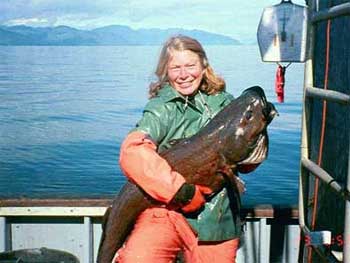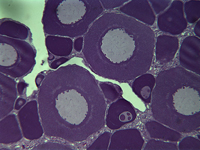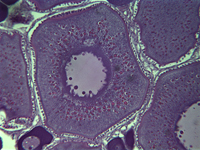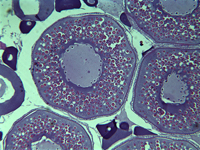
Sablefish Research
Southeast Alaska & Yakutat Commercial Fisheries

Sablefish (Anoplopoma fimbria)
Longline surveys
Annual longline surveys using chartered commercial vessels are conducted in the NSEI (Chatham Strait) and SSEI (Clarence Strait) groundfish management areas. These surveys are used to determine catch per unit effort (CPUE) and relative abundance of sablefish. The ADF&G also collects biological data such as length, weight, sex, maturity, and otoliths for aging from sablefish during these surveys.
Southern Southeast Inside (Clarence Strait) Sablefish Longline Survey (PDF 3,520 kB)
Mark-recapture studies
Sablefish have been tagged in the NSEI management area since 1997. From 1997 to 1999, sablefish were captured during the survey using longline gear. However, beginning in 2000, sablefish were captured using pot gear, to avoid any bias in recapture rates associated "hook shyness" exhibited by sablefish previously caught by longline gear.
Objectives
- Capture, mark, and tag 5000 or more sablefish two months prior to the NSEI commercial longline fishery.
- Observe and count the unmarked and marked sablefish landed by the NSEI commercial longline fishery in the major ports of Petersburg, Juneau, and Sitka.
- Collect external tags and tag recovery information from fishermen.
- Analyze mark-recapture data to estimate sablefish abundance in NSEI management area.
- Study movements of sablefish tagged in Chatham Strait and Frederick Sound.
Maturity research
A research study was performed to confirm the appropriateness of the current method of maturity staging for sablefish. In August 2007 ovary samples and maturity data, including, fork length, weight, and a maturity stage were collected from 215 female sablefish during the ADF&G longline survey in the NSEI management area. The maturity stage was determined by the "naked eye" based on characteristics, such as color and size of the ovary and egg visibility. Ovary samples were preserved and later prepared for histological analysis by staining, embedding in wax, and thin slicing. Samples were then examined under a microscope to determine the maturity stage of each ovary. The maturity classification assigned based on microscopic analysis was compared to the macroscopic classification determined during the survey. The analysis confirmed the overall appropriateness of macroscopic maturity staging at most stages. However, at the "maturing juvenile" stage at least half of the sablefish will spawn in the approaching season as expected, but half may not spawn until the following spawning season. This would indicate these fish were immature and misclassified. We can identify spawners of the upcoming spawning season by the presence of yolk in their eggs. The longline survey is in August, at least four months prior to the spawning season; consequently, the sampling time may be too early to identify all the spawners of the approaching season.

Immature Sablefish Eggs

Early-yolked Sablefish Eggs

Late-yolked Sablefish Eggs
Sablefish Maturity Poster presented at Western Groundfish Conference, Santa Cruz, 2008 (PDF 225 kB)
